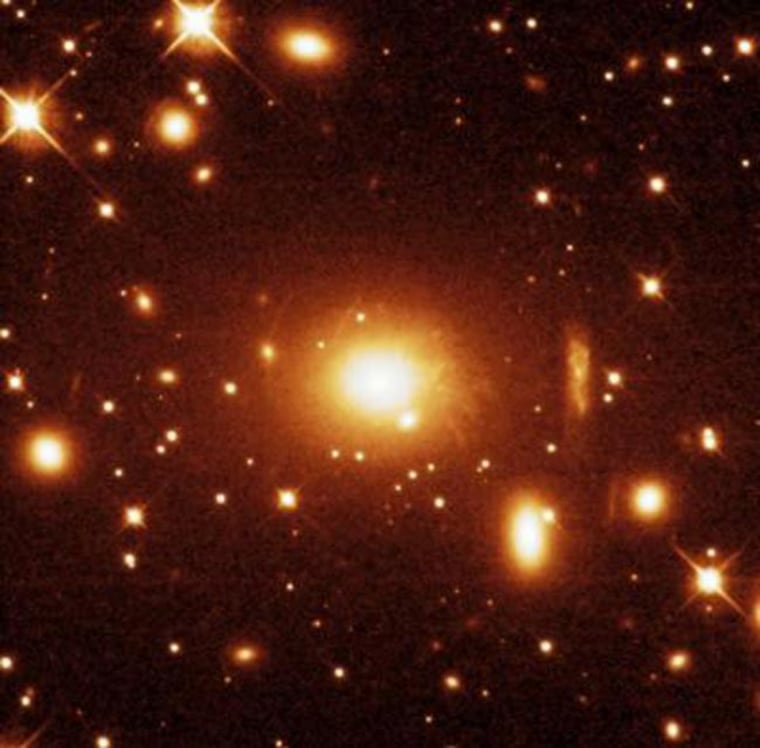Astronomers took a peek at the first X-ray image of an entire galaxy cluster, courtesy of a Japan-U.S. space observatory.
The target cluster known as PKS 0745-191 lies 1.3 billion light-years away in the southern constellation Puppis. The Suzaku observatory ("red bird of the south") took five images of the cluster's million-degree gas during last May.
"These Suzaku observations are exciting because we can finally see how these structures, the largest bound objects in the universe, grow even more massive," said Matt George, an astronomer at the University of California-Berkeley.
By looking at a cluster in X-rays, astronomers can measure the temperature and density of the gas, which provides clues about the gas pressure and total mass of the cluster. Astronomers expect that the gas in the inner part of a galaxy cluster has settled into a "relaxed" state in equilibrium with the cluster's gravity. This means that the hottest, densest gas lies near the cluster's center, and temperatures and densities steadily decline at greater distances.
In the cluster's outer regions, though, the gas is no longer in an orderly state because matter is still falling inward.
"Clusters are the most massive, relaxed objects in the universe, and they are continuing to form now," said team member Andy Fabian at the Cambridge Institute of Astronomy in the UK. The distance where order turns to chaos is referred to as the cluster's "virial radius."
For the first time, this study shows the X-ray emission and gas density and temperature out to — and even beyond — the virial radius, where the cluster continues to form. "It gives us the first complete X-ray view of a cluster of galaxies," Fabian said.
In PKS 0745-191, the gas temperature peaks at 164 million degrees Fahrenheit about 1.1 million light-years from the cluster's center. Then, the temperature declines smoothly with distance, dropping to 45 million F more than 5.6 million light-years from the center. The findings appear in the May 11 issue of the journal Monthly Notices of the Royal Astronomical Society.
To discern the cluster's outermost X-ray emission requires detectors with exceptionally low background noise. Suzaku's advanced X-ray detectors, coupled with a low-altitude orbit, give the observatory much lower background noise than other X-ray satellites. The low orbit means that Suzaku is largely protected by Earth's magnetic field, which deflects energetic particles from the sun and beyond.
"With more Suzaku observations in the outskirts of other galaxy clusters, we'll get a better picture of how these massive structures evolve," George added.
The Suzaku observatory mission launched July 10, 2005.
